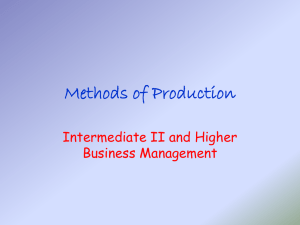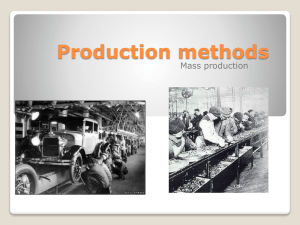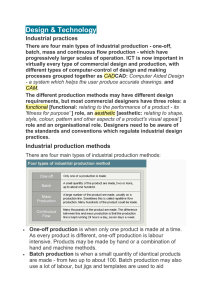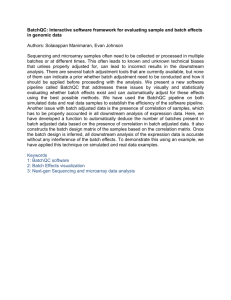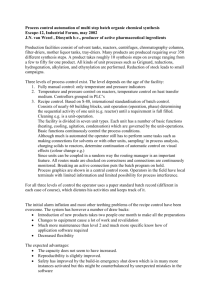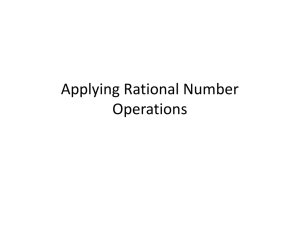Scale of production
advertisement
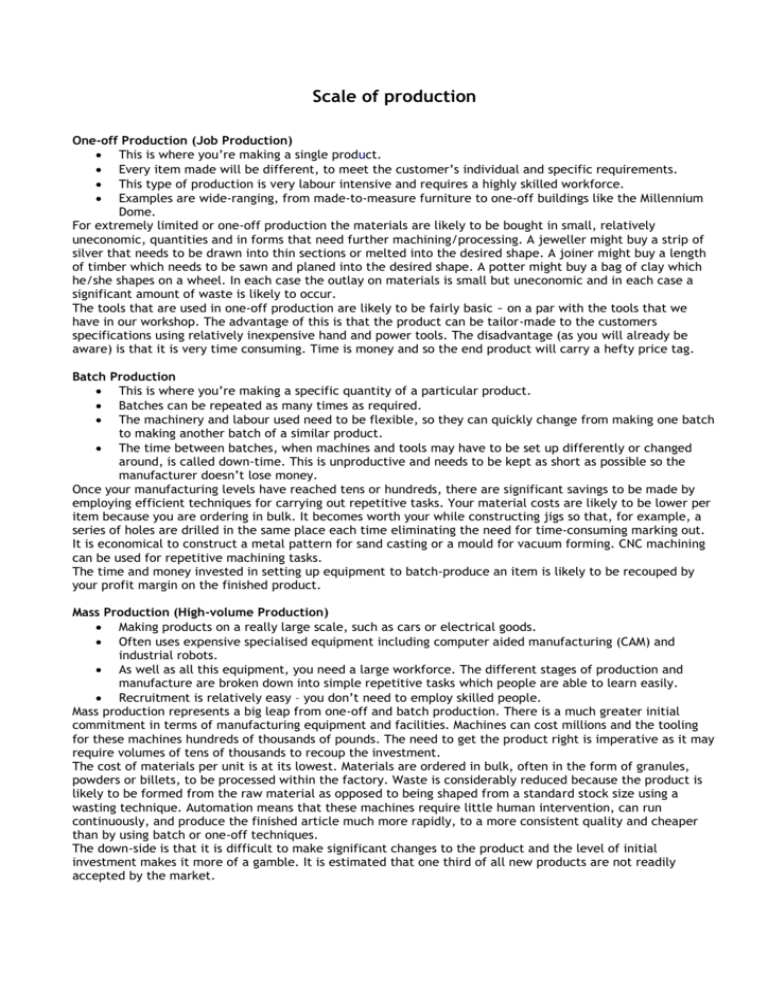
Scale of production One-off Production (Job Production) This is where you’re making a single product. Every item made will be different, to meet the customer’s individual and specific requirements. This type of production is very labour intensive and requires a highly skilled workforce. Examples are wide-ranging, from made-to-measure furniture to one-off buildings like the Millennium Dome. For extremely limited or one-off production the materials are likely to be bought in small, relatively uneconomic, quantities and in forms that need further machining/processing. A jeweller might buy a strip of silver that needs to be drawn into thin sections or melted into the desired shape. A joiner might buy a length of timber which needs to be sawn and planed into the desired shape. A potter might buy a bag of clay which he/she shapes on a wheel. In each case the outlay on materials is small but uneconomic and in each case a significant amount of waste is likely to occur. The tools that are used in one-off production are likely to be fairly basic ~ on a par with the tools that we have in our workshop. The advantage of this is that the product can be tailor-made to the customers specifications using relatively inexpensive hand and power tools. The disadvantage (as you will already be aware) is that it is very time consuming. Time is money and so the end product will carry a hefty price tag. Batch Production This is where you’re making a specific quantity of a particular product. Batches can be repeated as many times as required. The machinery and labour used need to be flexible, so they can quickly change from making one batch to making another batch of a similar product. The time between batches, when machines and tools may have to be set up differently or changed around, is called down-time. This is unproductive and needs to be kept as short as possible so the manufacturer doesn’t lose money. Once your manufacturing levels have reached tens or hundreds, there are significant savings to be made by employing efficient techniques for carrying out repetitive tasks. Your material costs are likely to be lower per item because you are ordering in bulk. It becomes worth your while constructing jigs so that, for example, a series of holes are drilled in the same place each time eliminating the need for time-consuming marking out. It is economical to construct a metal pattern for sand casting or a mould for vacuum forming. CNC machining can be used for repetitive machining tasks. The time and money invested in setting up equipment to batch-produce an item is likely to be recouped by your profit margin on the finished product. Mass Production (High-volume Production) Making products on a really large scale, such as cars or electrical goods. Often uses expensive specialised equipment including computer aided manufacturing (CAM) and industrial robots. As well as all this equipment, you need a large workforce. The different stages of production and manufacture are broken down into simple repetitive tasks which people are able to learn easily. Recruitment is relatively easy – you don’t need to employ skilled people. Mass production represents a big leap from one-off and batch production. There is a much greater initial commitment in terms of manufacturing equipment and facilities. Machines can cost millions and the tooling for these machines hundreds of thousands of pounds. The need to get the product right is imperative as it may require volumes of tens of thousands to recoup the investment. The cost of materials per unit is at its lowest. Materials are ordered in bulk, often in the form of granules, powders or billets, to be processed within the factory. Waste is considerably reduced because the product is likely to be formed from the raw material as opposed to being shaped from a standard stock size using a wasting technique. Automation means that these machines require little human intervention, can run continuously, and produce the finished article much more rapidly, to a more consistent quality and cheaper than by using batch or one-off techniques. The down-side is that it is difficult to make significant changes to the product and the level of initial investment makes it more of a gamble. It is estimated that one third of all new products are not readily accepted by the market. Continuous Production (Non-stop Production) This involves non-stop uninterrupted production. The specialised equipment required costs so much that it would be too expensive to turn it off. So it has to keep running and producing continuously to regain the initial outlay for the equipment. Examples of continuous production include oil and chemical manufacture. This manufacturing system is otherwise the same as mass production. Questions: Describe three advantages and three disadvantages to the manufacturer for each production method: Advantages Disadvantages One-off Batch Mass Continuous State one advantage and one disadvantage to the consumer for each production method: Advantages One-off Batch Mass Continuous Disadvantages
